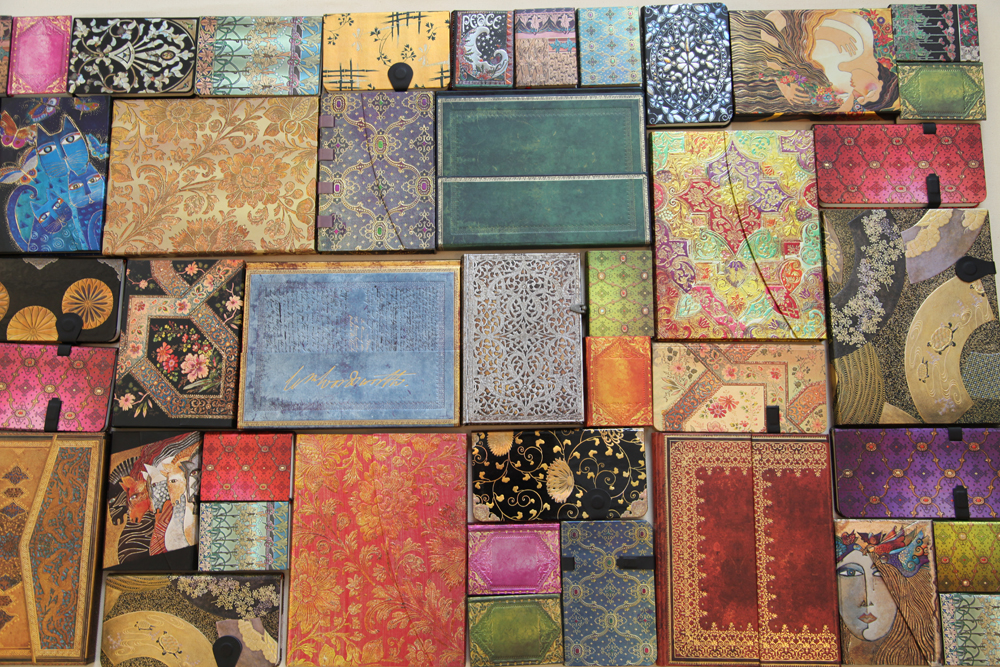While an aspiring author may want to believe that good talent and quality writing will prevail, we are too often faced with the hard truth that we are not living in a true meritocracy. Yes, the hardworking single mum may eventually sell her stories of a boy wizard for millions of dollars, but this is the exception to the rule. There are countless cases of brilliant writing that has gone unnoticed during a writer’s lifetime; so many, in fact, that one must wonder how many more writers from times past still remain unheralded.
So, what can you do to help get yourself ahead? A publicist, social media campaign and proper networking can certainly lend a hand, but what role does the purely aesthetic play in getting your writing sold? Despite the popular adage, “Don’t judge a book by its cover,” the saying is probably better applied as a social caution than to the process of actually selecting a book.
A recent photo that has made the online rounds depicts brown paper–wrapped books said to be sold at a bookstore trying to help shoppers avoid being pulled in by a fancy cover:

Looking around our local bookstores, though, it doesn’t appear that this packaging angle has turned into a trend. Instead, eyes continue to be drawn to the boldest and brightest book covers. So, what does this mean for your next publication?
Quite simply, make sure the book cover represents the inside. This tip may seem quite obvious to us today, but it actually wasn’t until the legendary bookbinder Marius Michel burst onto the scene in the late 1800s that the exterior of a book was matched to the themes inside. And while juxtaposition of themes can certainly be eye-catching, it would be rather misleading to pull in a bookstore browser with romantic cover art only to have the contents be a tale of political intrigue. Don’t expect a reader to see through the exterior and know they will be interested in a book’s contents – a reader who likes to read spy thrillers will probably also like to look at a cover representing that type of story. A general rule of thumb in retail is to make the process as painless as possible for a shopper, and this applies to bookstores, as well.
In the same vein of making things as easy as possible for someone to find your work, it’s important to keep in mind the various ways a store or library may set up a book display. The front cover is key, but don’t neglect the spine! While having the name of the book as well as your name helps guide potential readers, just as important is making these features eye-catching.
From there, you need to make this book cover memorable. Bookbinding has been around for centuries, so while you may be drawn to a “classic” style cover, do keep in mind that it’s become a standard for a reason. These covers tend to become rather generic-looking and, unless your name is already quite well-known and can stand out on its own, they do little to pull in a new reader “But wait,” you say, “I’m an author, not a visual artist!” Well, that’s why hiring a professional illustrator or graphic artist to turn your written ideas into a work of art is always a smart way to go.
Think this is all a lot of work just for some fancy packaging that shouldn’t be nearly as important as the actual contents of the book? It’s time to think again. Even simply Googling “Book Covers” will show you the amount of time people spend searching out the best covers, and publicly shaming the worst. One could even say the driving force behind most of our Paperblanks® collections is a desire to showcase the greatest book covers of all time!
With this in mind, what’s the best or worst book cover you’ve ever seen?
About Paperblanks: At Paperblanks, we believe that art should have a place in all aspects of life. That’s why we follow the artist’s way in everything we do – creating, crafting and releasing designs we believe have the power to touch people. For more about Paperblanks, go to our website at paperblanks.com.







